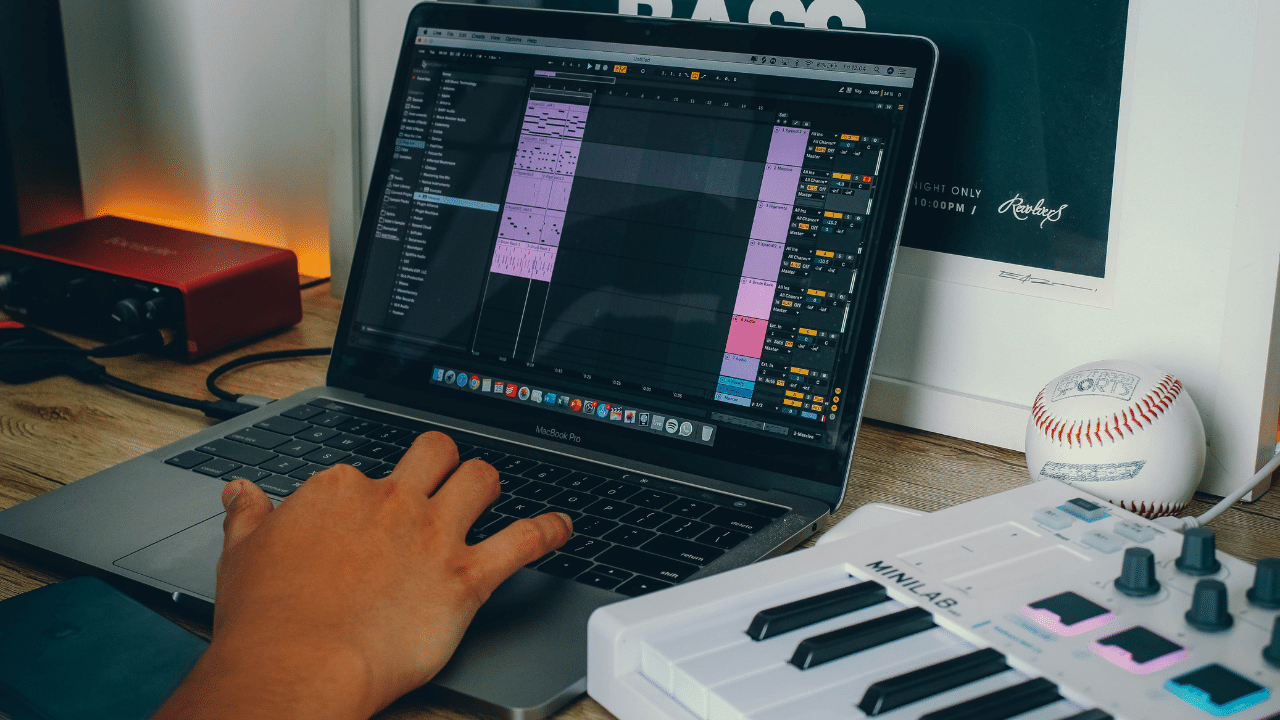Making your First Beat with Ableton Live

Ableton Live is one of the world’s most popular digital audio workstations. It has a large community of artists and producers who are constantly creating new sounds and patterns for Ableton packs. You don’t need to spend a lot of money to get started with Ableton Live either. Using the included sounds and samples means you can focus on learning how to use Ableton without spending anything extra on expensive third party plugins and sample packs. There is a 90-day Free Trial so you can explore the inner workings of Ableton Live without spending a dime. Picking up any digital music program on your own will be an uphill battle at first, so here we will examine some strategies you can implement in order to make your first beats easier:

Ableton Live Overview
Ableton Live has a lot of different features that make it easy to use but confusing to navigate at first. When you open up Ableton Live for the first time, hit the “Tab” key to check out the 2 main views. This will give you an overview of how everything is laid out. - Get familiar with basic functions: In order to get started making music in Ableton, it is important to learn about basic functions like track creation and sequencing. You may want to create a new project file (called a Live Set) before you start creating tracks. - Learn some of the basics: To make your life easier, try watching one of the many free tutorials on the Ableton website. They’ll help lay out some objectives and provide clear instructions about how to accomplish them!
Intro to MIDI
MIDI (Musical Instrument Digital Interface) is a standard that identifies notes on/off, pitch, modulation and other musical information between devices like keyboards, synthesizers, and drum machines to your computer. MIDI devices do one or more of the following: data entry (controllers), programming (sequencers) and sound playback (sound modules). MIDI data in Ableton live can be recorded, programmed and edited with a MIDI editor. Ableton live has both MIDI software instruments and effects.

👉 Take my FREE Ableton Live course
Programming Drum Beats
The first thing you should do is pick out a drum kit or some drum loops. Drum kits make it easy to create patterns and beats that sound professional, while loops provide an endless supply of sounds and rhythms for you to try out. Once you have a drum kit or loop loaded into a new MIDI track, the next step is programming a beat. Start by creating a one or two bar of looped MIDI clip.This will lay down a rhythmic foundation for your track. This might be the most difficult part of the process because learning how to program drums can be difficult and painstaking at first, but stick with it because soon enough you’ll start seeing some progress! Start with some kick drums and then add some hi-hats and snares.
Programming Basslines
One of the best ways to start to understand how music theory works in the MIDI note editor is by programming your own basslines. One way to do this is by selecting and playing your notes on a MIDI keyboard. The other way is by programming notes right into the MIDI editor. To start programming instrument sounds in Ableton, try making some bass notes with one of the presets in the built-in softsynths like Operator or Analog. These will help you get a feel for how all of the parameters work within Ableton, which will allow you to make more unique sounds when creating your own instrument patches.

Programming Chords
After creating a bass line you’ll want to familiarize yourself with programming chords in Ableton Live. This is easier than it looks. Unlike the monophonic single bass notes, the chords will require 2 or more notes to play at the same time in polyphony. Use the piano role to choose the interval of the spaces between the notes to create major or minor sounding chords. Experiment with what sounds good to you and if you hear a note that doesn’t quite fit try dragging the note up or down a semitone which is 1 vertical division in the MIDI note editor.
Using Effects
One of the best ways to make your first beats sound great is to use effects found in the Audio Effects section. For example, you can use effects like reverb or delay to create a fuller dimension of sound that places your instruments in a virtual space. Control the volume dynamics of each instrument byt using compressors, limiters and noise gates. To alter the tone of your instruments use one of the EQ’s. You’re not limited to just using one effect either – try experimenting with different combinations of effects until you find something that works well for the track!
Conclusion: Making your first beat in Ableton Live can be a really fun experiment. Understand beforehand that there are many things that can make the experience overwhelming. Try to focus on doing a few simple things at first and before you know it you will be able to repeat some simple beat creation and songwriting tasks.

Futch - Music Production Coach, Ableton Certified Trainer
Learn How To Make Music Using Ableton Live with my FREE online course
24 week live online classes and on-demand video training:
• Music Production Fundamentals • Writing Exciting Songs • Designing Your Artistic Vision





